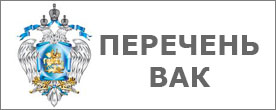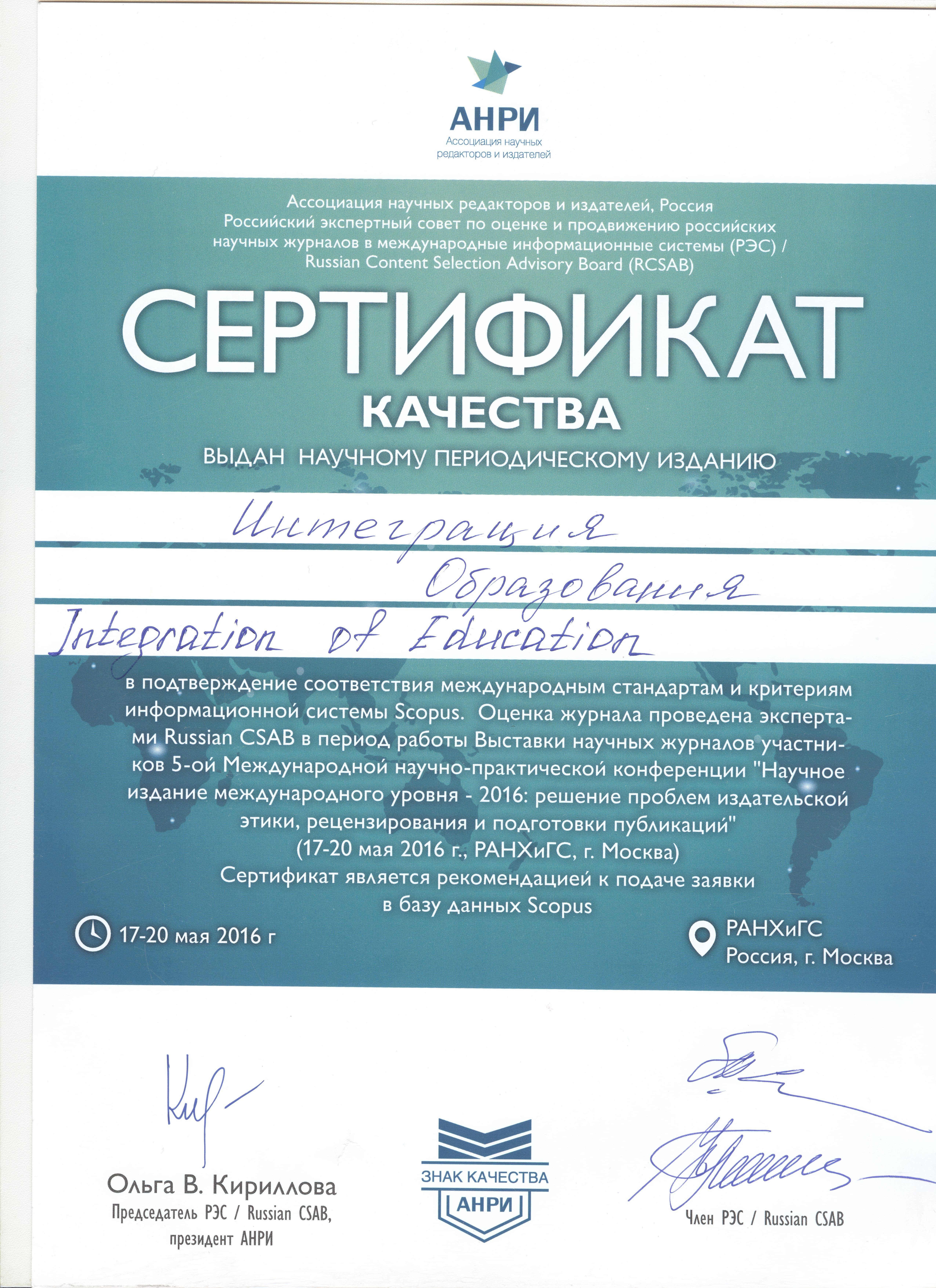UDK 37.01:159.923
DOI: 10.15507/1991-9468.091.022.201802.339-352
Implicit Learning of Combined Sequences
Andrey Yu. Agafonov
Head of Chair of General Psychology, Samara National Research University (34 Moskovskoe Shosse, Samara 443086, Russia), Dr.Sci. (Psychology), Professor, ORCID: http://orcid.org/0000-0003-1546-605X, This email address is being protected from spambots. You need JavaScript enabled to view it.
Sergey N. Burmistrov
Senior Lecturer of Chair of General Psychology, Samara National Research University (34 Moskovskoye Shosse, Samara 443086, Russia), ORCID: http://orcid.org/0000-0002-6567-6779, This email address is being protected from spambots. You need JavaScript enabled to view it.
Dmitriy D. Kozlov
Senior Lecturer of Chair of Social Psychology, Samara National Research University (34 Moskovskoe Shosse, Samara 443086, Russia), ORCID: http://orcid.org/0000-0001-9768-5584, This email address is being protected from spambots. You need JavaScript enabled to view it.
Alyona P. Kryukova
Post-Graduate student of Chair of General Psychology, Samara National Research University (34 Moskovskoe Shosse, Samara 443086, Russia), ORCID: http://orcid.org/0000-0001-8232-3951, This email address is being protected from spambots. You need JavaScript enabled to view it.
Introduction. The study is concerned with revealing specific aspects of use of implicit knowledge when combined sequence is learned. The paper focuses on the problem of unconscious perception of multiple information. Unlike most of other researches in implicit learning, the present study probes into implicit knowledge usage under condition of conscious manipulation of one of several parameters in combined sequence. The aim of the study is to reveal aspects of implicit knowledge use in combined sequences learning.
Materials and Methods. “Sequences learning” experimental technique was implemented to find out attributes of implicit knowledge gaining and usage in sensomotor tasks. 9 geometrical figures of different forms and colours were exposed 15 times sequentially in the certain order during the training phase of the study. Participants were asked to press certain key after a figure of relevant form appeared on the screen as quick as they can. During the test phase that followed, participants were asked to press a certain key after a figure of relevant colour appeared on the screen. Conditions varied depending on whether one or another pattern (by form or by color) was implemented in the sequence of stimulus. Time of sensorimotor reaction in serial reaction task was used as empirical marker of learning efficacy. The procedure was carried out on a typical serial laptop with screen resolution 1366x768 pixels running a program specially written for the present study.
Results. We have found that a person is capable to learn implicitly several patterns in structured information presented during the “sequence learning” task. There is no interference between different rules that were learned. Implicit knowledge about the pattern of relevant parameter has a major impact on solving the task that needs conscious control. Thereafter, learning the pattern of irrelevant parameter has no significant effect.
Discussion and Conclusion. Learning of combined sequences can lead to positive and negative effects on further actions. Positive effect occurs when implicitly learned sequence corresponds to conditions of the task (relevant parameter remains). Negative effect occurs when sequence does not correspond to conditions of the task (relevant parameter changes). Positive and negative aftereffects of combined sequences learning can be interpreted as an expression of complex type setting phenomena: these effects occur because of unconscious state of readiness to perceive an appearance of objects in a certain way. The results can be useful for educational programme developers, especially in trai ning to use different kind of interfaces.
Keywords: cognitive activity, implicit learning, combined sequence, serial reaction task, sensorimotor reaction time
Acknowledgments: The study was supported by the Russian Foundation for Basic Research (project No. 16-06-00110).
For citation: Agafonov A.Yu., Burmistrov S.N., Kozlov D.D., Kryukova A.P. Implicit Learning of Combined Sequences. Integratsiya obrazovaniya = Integration of Education. 2018; 22(2):339-352. DOI: 10.15507/1991-9468.091.022.201802.339-352
Contribution of authors: Andrey Yu. Agafonov – conducting research; planning of experimental design; data analysis; writing the draft; financial management. Sergey N. Burmistrov – software development; conducting experiment al research; editing the text. Dmitriy D. Kozlov – processing of data; analysis and presentati on of data. Alyona P. Kryukova – experiment management; recruitment of participants; reviewing the relevant literature.
All authors have read and approved the final manuscript.
Submitted 22.11.2017; revised 11.01.2018; published online 29.06.2018.

This work is licensed under a Creative Commons Attribution 4.0 License.





























